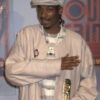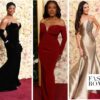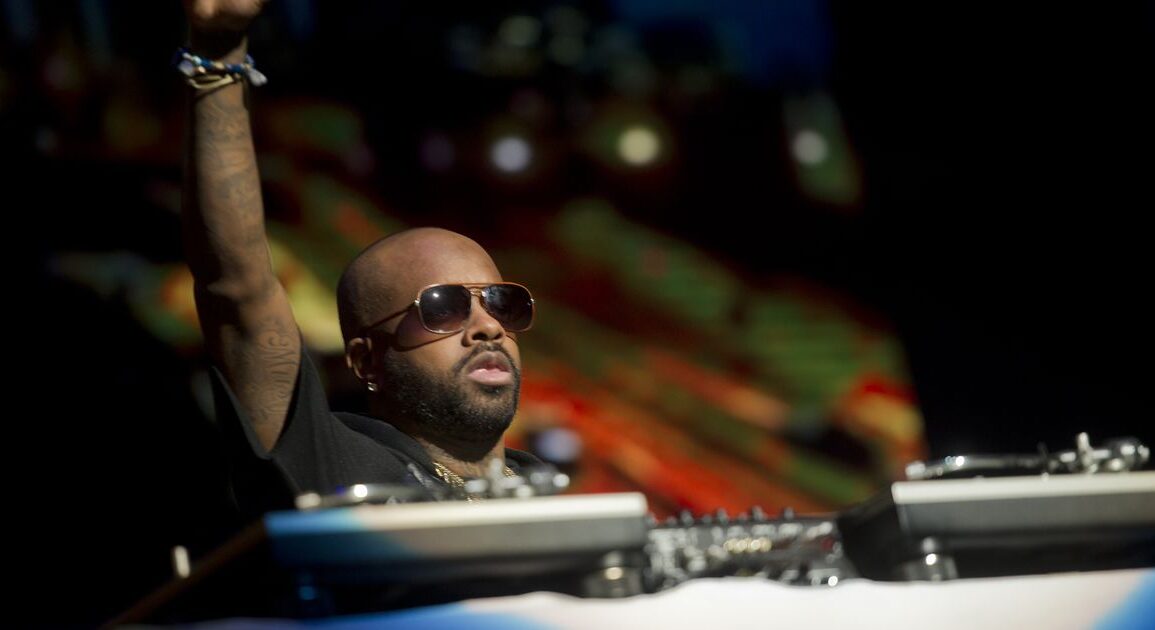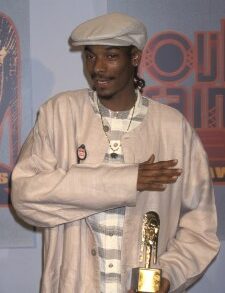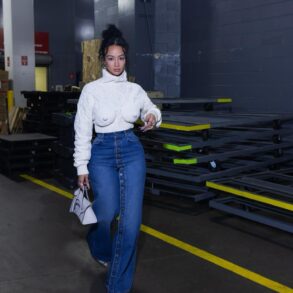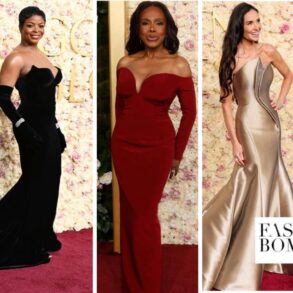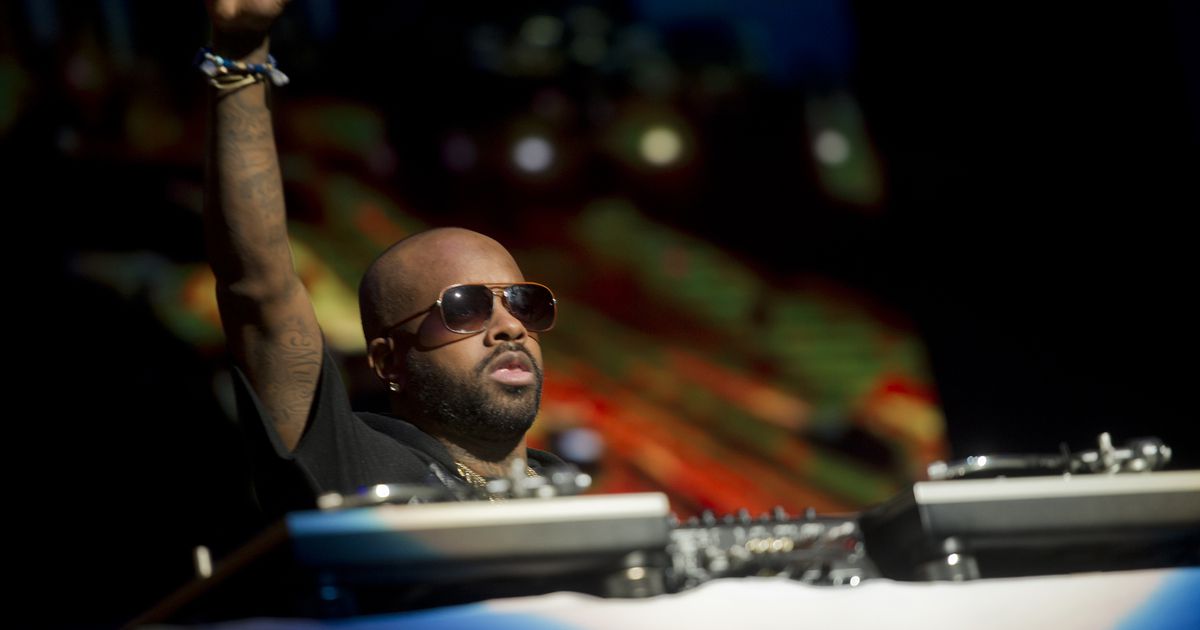
Hummers. Hot tubs. Hummers with hot tubs. Hip-hop is all about livin’ large, as rapper Mannie Fresh notes in his new single.
“House real big, cars real big, belly real big, everything real big. . . . Lemme tell you how I live.”
What’s really big, though, is hip-hop’s influence on pop and consumer culture. As hip-hop hits its 25-year mark, the movement has worked its way from the street corners of Brooklyn to the corner offices on Madison Avenue.
In rap’s early days, corporate America shied away from its violent, sexual nature, but companies have changed their tune now that hip-hop is mainstream. Today rappers take commercial messages to the masses.
Jay-Z hawks Heineken. L.L. Cool J shills for Volvo. And bad girl Lil’ Kim, not known for wearing a whole lot, peddles Old Navy fleece.
Consumers want to drink what rappers drink, wear what rappers wear and drive what they drive.
In the rags-to-riches theme that pulses through so many rap songs, just about every consumer category has gotten a thumping endorsement, from the obvious — cars, clothes and cognac — to the not so obvious — instant cameras, dessert toppings and discount insurance firms.
Even Broadway has gotten a boost. Sean “P. Diddy” Combs, despite lukewarm reviews from theater critics, packed the house when he appeared in “Raisin in the Sun,” one of the few shows that made money in the 2003-04 season.
Hip-hop style has become so pervasive that it would be impossible to calculate its total impact on fashion, movies, advertising and consumer behavior. However, marketing experts estimate that as much as one-quarter of discretionary spending is influenced by hip-hop.
“I [always] knew hip-hop was bigger than music,” said mogul Russell Simmons, who has been crowned as hip-hop’s pioneering chairman of the board. In the past two decades, Simmons has helped turn hip-hop into an industry, first with music label Def Jam, then with clothing label Phat Farm, followed by a film company, marketing agency and other spinoffs.
“It’s no surprise to me that [hip-hop] has become the Goliath it is,” Simmons said. “Hip-hop is all about the American dream.”
Hip-hop empires
Hip-hop CDs rang up $1 billion in sales last year, according to market research firm NPD Group of Port Washington, N.Y.
Yet if a rapper really wants to make it, albums are only a jumping-off point. The big money is in creating a brand out of a superstar performer.
Rapper-turned-executive Combs oversees a clothing line that brings in $450 million in retail sales a year, a Manhattan boutique and two restaurants — including one in Atlanta — in addition to his Bad Boy record and film production company.
Similarly, Damon Dash and partner Shawn “Jay-Z” Carter run the music-fashion-film empire known as Roc-A-Fella Enterprises, where there’s certainly no shortage of cross-merchandising.
Now that Dash owns the top-shelf vodka brand Armadale, Roc-A-Fella’s rappers are more inclined to name-drop Armadale in lyrics instead of, say, Belvedere or Grey Goose. And it’s probably no coincidence that rappers who appear in Roc-A-Fella films happen to be wearing Rocawear threads.
Dash recently launched a luxury watch company, Tiret New York (watches starting at around $18,000 a pop), and a luxury magazine named America. He says he soon will unveil a line of consumer electronics, and there’s talk of launching a hotel chain for the ultra-hip.
The way Dash sees it, the global appeal of hip-hop paved the way for an entrepreneurial streak that was just waiting to be tapped.
“The business of hip-hop is so lucrative,” said Dash, taking a break from a recent advertising photo shoot for Land Rover. “If we didn’t do it, somebody else would.
“We’re taking advantage now, instead of everybody taking advantage of us. We’re in control of the endorsing, accessories, product lines and the music, which makes us look way more intelligent than people say hip-hop is.”
As hip-hop execs go, Atlanta’s Jermaine Dupri, founder of So So Def Records, may be the one sticking closest to his musical roots.
Most of Dupri’s money comes from songwriting and producing, although he’s given other ventures a try. A sports agency came and went, as did a short-lived run at his own clothing label. He’d like to open a cafe, and there’s talk of a pilot for a reality TV show on Turner South. Dupri also recently bought into Chicago-based 3 Vodka Distilling Co.
Musicians diversify
From Elvis’ flipped-up collar to the grungy flannel of Seattle rock ‘n’ roll, music has always had a huge influence on fashion. But hip-hop has spawned an unprecedented string of performers-turned-designers.
Sales of hip-hop labels topped $2 billion last year, according to NPD Group.
In the past couple of months alone:
> Kimberly “Lil’ Kim” Jones, known for her purple pasties at the 1999 MTV Video Music Awards, unveiled a luxury watch collection dubbed Royalty. Tricked out with 2-carat diamonds, the watches will sell for $1,800 to $3,500 and are being manufactured by bling-bling king Jacob Arabo, known better as Jacob the Jeweler.
> Missy Elliott hooked up with Adidas to launch the “Respect M.E.” clothing line.
> With a hand from Reebok, Pharrell Williams launched the Ice Cream sneaker line. The first run features faux diamonds and dollar signs.
Diamonds aside, hip-hop fashion is maturing from supersized athletic jerseys and baggy pants to a more tailored look as it moves into the mainstream.
Sean John, Rocawear and Phat Farm are dressing up with blazers, suits and silk shirts. Fashion experts say designers are trying to keep up with hip-hop fans who are growing older.
“I need something for a job interview,” said Antone Marcos, 30, shopping recently in Macy’s at Perimeter Mall. An aqua-colored, French cuff shirt by Sean John caught his eye. “I want to look good, but not like somebody’s dad.”
Nearby, a young man snapped his fingers to OutKast’s “Hey Ya” pumping over the store sound system as he browsed through a stack of Enyce jeans.
Macy’s is a good gauge of hip-hop’s mainstream appeal.
So-called urban brands such as FUBU, Enyce, Sean John and Rocawear have steadily taken floor space from menswear mainstays Polo Ralph Lauren, Nautica and Tommy Hilfiger.
Urban apparel is one of the fastest-growing menswear categories, pushing some old-school apparel companies to hook up with a younger crowd.
Kellwood Co., one of the nation’s largest apparel companies, just purchased Phat Fashions from Simmons, who’ll stay on as chief executive. Soccer mom mainstay Liz Claiborne has bought urban label Enyce.
“One thing that hip-hop fashion is teaching companies is that they’ve got to truly understand consumers,” said Jim Neal, a brand strategist for retail and consumer products consulting firm Kurt Salmon Associates in Atlanta. “The population is getting more diverse, particularly the younger population, and they’re open to many different influences. . . . Some of these companies are realizing they don’t have anything that’s youth-oriented, so hip-hop is a way for them to be seen as young and hip.”
Cool Whip to Cartier
Yet hip-hop is not always a matter of the latest and greatest. Rappers have rescued more than a few stodgy brands, if only for a moment in the spotlight.
Polaroid got a bounce from Atlanta’s OutKast when they uttered “Shake it like a Polaroid picture” in the runaway hit “Hey Ya.”
After briefly posting a customer warning — shaking can actually mess up a Polaroid image — the camera company quickly jumped on the chance to be cool again. Soon OutKast frontmen Big Boi and Andre 3000 were commissioned to carry Polaroids onstage, snapping pictures at the Grammy Awards and the NBA All-Star Game and on “Saturday Night Live.”
Marketers called it a modern “My Adidas,” referring to the Run DMC hip-hop anthem of the 1980s that won the rappers a shoe endorsement deal. (OutKast frontman Andre 3000 said he simply had a thing for Polaroid cameras and didn’t get any money for the reference.)
The luxurious but lagging cognac brand Courvoisier started flying off shelves after P. Diddy and Busta Rhymes intoned “Pass the Courvoisier” in their 2002 megahit. Courvoisier’s parent, Allied Domecq, was so thrilled with its new fan base, it enlisted Fonzworth Bentley, best known as P. Diddy’s parasol-toting assistant, as its spokesman.
Companies are no longer waiting on a shout-out, though, thanks to a string of new firms that specialize in getting brands into song lyrics. Lanham, Md.-based Maven Strategies, for example, pays artists based on how well a brand-laced song moves up the charts. Songs that get heavy airplay can win the artist a corporate check for six figures, according to a recent article in Billboard magazine.
The line between entertainment and advertising has blurred during a time of declining CD sales and crunched music industry budgets.
“Corporate America and hip-hop have become co-dependent on each other,” said brand strategist Caralene Robinson of Atlanta-based Star Marketing. “The music industry depends heavily on corporate America to underwrite the costs of marketing artists, and in turn, companies depend on hip-hop artists to make them look cool.”
It’s getting harder for companies to find the right fit, though, now that rappers have turned into megamarketers, said Robinson, who formerly ran Coca-Cola’s urban branding division.
Robinson said she recently fielded a pitch from a multiplatinum hip-hop star who wanted $1 million from a cellphone provider in exchange for pre-releasing CDs at cellphone stores.
“We turned it down. That’s just too much money,” Robinson said.
Overall, the relationship between hip-hop and business is chummy, so much so that Lucian James of San Francisco-based market research firm Agenda Inc. created the American Brandstand list to track how many times rappers mention brand names.
From Cool Whip to Cartier, there have been 910 brand mentions in the Billboard Top 20 singles chart this year. The range of brands is spreading, too.
In addition to this year’s faves — Hennessy, Cadillac, Rolls-Royce and Gucci — quite a few brands of the non-bling variety have gotten a nod, too.
“I drink a Boost for breakfast, and Ensure for dizzert,” says rapper Kanye West in one of many listings on the American Brandstand chart. West is this year’s most prolific spokesman, mentioning 19 brands in four songs, including insurer Geico and retail chain Toys “R” Us.
“The general trend is moving away from simple name-dropping of luxury brands to . . . the brands that shape our everyday lives,” James noted.
“Hip-hop has always been very commercial,” he said. “It’s just that the very commercial side has become mainstream.”
— Staff writer Sonia Murray contributed to this article.
This post was originally published on this site be sure to check out more of their content.

